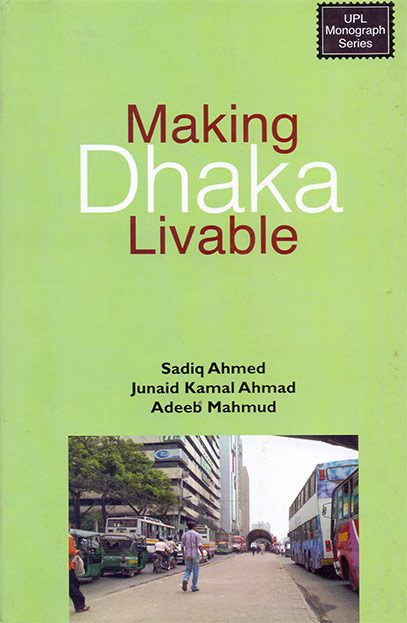- Shop
- Architecture
- Making Dhaka Livable
Making Dhaka Livable
https://uplbooks.com/shop/9789840517817-making-dhaka-livable-3048 https://uplbooks.com/web/image/product.template/3048/image_1920?unique=90f5a49
| Language: English |
Tags :
Book Info
With a population of almost 12 million, Dhaka is the world's 11th largest city and amongst the most densely populated ones. At the same time, it is consistently ranked as one of the least livable cities in the world. Rapid migration, poor city management, low efficiency, and massive corruption in service provision are exacerbating the problems. Urban traffic is reaching nightmarish proportions, and water and air pollution from poor waste and traffic management poses serious health risks. The already acute slum population is growing further, contributing to serious human and law and order problems. Actions to ensure an adequate supply of basic services and to tackle corruption and wastage are needed immediately. This monograph suggests that the management problems of Dhaka cannot be addressed in a piece meal fashion. Deployment of additional resources and massive investment will be required to meet the large backlog of unmet demands. To make this investment effective, there is a need to fundamentally and systemically rethink the governance of Dhaka. The monograph offers some basic guiding principles that must underpin a reform program. It provides alternative approaches based on a review of good practice international experiences. The monograph concludes that in reforming Dhaka, policymakers will need to establish an elected, decentralized and accountable city government that has well defined service delivery responsibilities, considerable financial autonomy, and well defined relationship with the central government. Consistent with this broad foundation and given the primacy of Dhaka, regardless of the outcome of the forthcoming national elections, the challenge of Making Dhaka Livable has become a national priority.

Sadiq Ahmed
Sadiq Ahmed is the Director of the Poverty Reduction and Economic Management unit, South Asia Region, at the World Bank. His previous positions at the World Bank include Country Director for Pakistan and Afghanistan and Chief Economist of the South Asia Region. He has published in the areas of economic development, public finance, international trade and monetary economics.





